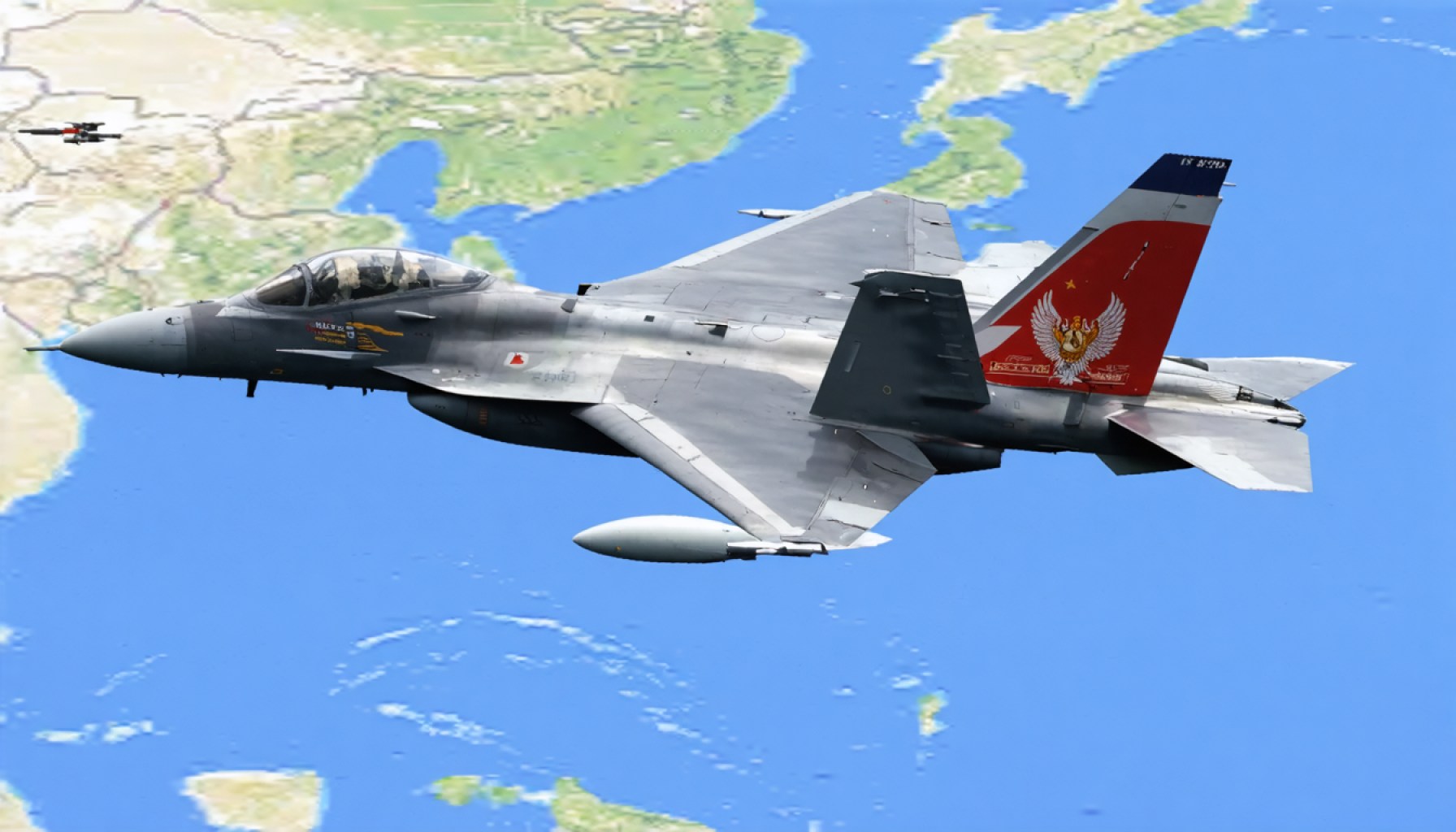- The Philippines has announced a $5.58 billion purchase of 20 U.S.-made F-16 fighter jets to enhance its defense capabilities.
- This military acquisition signifies the Philippines’ commitment to modernizing its military forces and strengthening its aerial power.
- China has expressed concerns, viewing the deal as a potential disruption to regional power balances, but the Philippines assures its intent is peaceful.
- Philippine officials emphasize that the jets are for defense, reinforcing their role as peacekeepers in Southeast Asia’s skies.
- The deal highlights the Philippines’ strategic alliances, particularly with Western powers, illustrating a complex geopolitical landscape.
- This acquisition reflects broader international relations strategies and emphasizes the importance of maintaining sovereignty while developing partnerships.
- The situation underscores the ever-changing dynamics of global diplomacy and the balance between military capability and diplomatic engagement.
On the sun-drenched islands of the Philippines, where sprawling coastlines meet the vast Pacific Ocean, a significant military deal is quietly echoing through the chambers of geopolitical strategy. The archipelago nation, balancing itself at the crossroads of East and West, has announced an armament boost with its purchase of 20 U.S.-made F-16 fighter jets, a move setting off reverberations across the South China Sea.
The deal, worth a striking $5.58 billion, is poised to redefine Philippine defense capabilities. As the Philippines strengthens its aerial prowess, it underscores a clear indication of its resolve to modernize its military forces. Yet, amidst the engines roaring to life, a diplomatic tango ensues—a dance with giants on a global stage.
China, a formidable presence and Philippines’ neighboring behemoth, raises its eyebrows skeptically. The ripples of this deal have reached Beijing’s shores, prompting their officials to voice concerns. They caution Manila against ventures that might inadvertently compromise interests of third-party nations, a subtle reminder of the intricate balance of power in the region.
However, Philippine officials remain steadfast. With diplomacy on center stage, they assure the world—especially China—that the acquisition is a shield, not a spear. National Security Council Assistant Director General Jonathan Malaya speaks with clarity, emphasizing that these fighter jets are not arrows aimed at any nation but are rather guardians of peace in the volatile skies of Southeast Asia.
The Philippines, with its strategic position and storied history, finds itself bound to both respect and authority. Such transactions not only enhance defense capabilities but also reflect on a broader tapestry of alliances, hinting at deepening ties with Western powers. This alignment resonates beyond mere military arsenals; it’s a testament to trust, a handshake across oceans.
For the global audience, this situation serves as a stark reminder of the nuanced dynamics in international relations. Military acquisitions like this are not isolated decisions. They symbolize broader strategies, affirming sovereignty while navigating the often turbulent waters of diplomacy.
In a world where alliances shift as swiftly as sands on a beach, the Philippines’ decision marks a significant chapter. It illustrates the delicate dance between maintaining sovereignty and fostering strategic partnerships. As nations watch, eyes fixed on these jets that soar above the azure, the lesson is clear: in realms of diplomacy, assurance, and intention must fly faster than the winds of war.
Will the Philippines’ F-16 Deal Shift the Power Balance in the South China Sea?
Overview of the F-16 Deal
The Philippines’ recent acquisition of 20 U.S.-made F-16 fighter jets, valued at $5.58 billion, marks a significant step in strengthening the country’s defense capabilities. This move aims at bolstering military modernization efforts and ensuring the nation’s sovereignty amidst rising regional tensions, particularly concerning the South China Sea.
How-To Steps & Life Hacks: Military Modernization
1. Assessment of Needs: Countries like the Philippines start with a comprehensive evaluation of current defense needs and future threats.
2. Selection of Equipment: After identifying the needs, nations select appropriate military equipment; the F-16 was chosen for its versatility and proven track record.
3. Training and Integration: Effective deployment requires extensive training for pilots and technicians alongside the integration of new systems with existing infrastructure.
4. Diplomatic Engagement: Simultaneously, diplomatic channels remain active to ensure acquisitions are seen as defensive and non-aggressive.
Real-World Use Cases
– Air Space Defense: The F-16s will primarily be used to secure Filipino airspace against unauthorized incursions, a frequent occurrence due to territorial disputes.
– Humanitarian Missions: Beyond warfare, these aircraft can be deployed for disaster response and humanitarian missions—a critical capability given the Philippines’ vulnerability to natural disasters.
Market Forecasts & Industry Trends
– The global fighter aircraft market is expected to grow as regional tensions amplify. According to a report by Grand View Research, the market could reach $73 billion by 2030, spurred by technological advancements and defense upgrades in Asia-Pacific regions.
– The geopolitical climate, especially in the Indo-Pacific, will drive further acquisitions of advanced military assets as nations balance deterrence with diplomacy.
Controversies & Limitations
– Regional Tensions: Acquisitions may provoke neighboring nations, escalating regional tensions.
– Economic Implications: Spending billions on military assets can draw criticism, especially if it affects domestic social services.
– Operational Costs: The long-term costs of maintaining and operating advanced fighters like the F-16 can be substantial.
Insights & Predictions
– Strategic Alliances: The deal reinforces strategic ties between the Philippines and the United States, hinting at increased collaboration in defense exercises and military technology exchange.
– Regional Reactions: While China’s apprehension is notable, other Southeast Asian countries may view this as a cue to enhance their defenses.
– Local Impact: In the Philippines, this military upgrade may boost local defense manufacturing and create new jobs through associated industries.
Pros & Cons Overview
Pros:
– Enhanced national defense capabilities.
– Strengthened international alliances, particularly with the U.S.
– Improved technological and logistical warfare capacity.
Cons:
– Potential diplomatic friction with neighboring countries.
– High financial costs with long-term budget implications.
– Risk of escalating regional arms race.
Recommendations
– Diversify Diplomatic Engagement: While strengthening defense capabilities, it’s crucial for the Philippines to continue diplomatic efforts to reassure neighboring countries and avoid triggering an arms race.
– Invest in Maintenance and Training: Prioritize budget allocations for maintenance and training programs to ensure the long-term operational readiness of the new aircraft.
– Public Transparency: The government should maintain a transparent dialogue with its citizens regarding the benefits and limitations of such military investments to uphold public trust.
For further understanding of global military industries and trends, visit the reliable Janes website.







